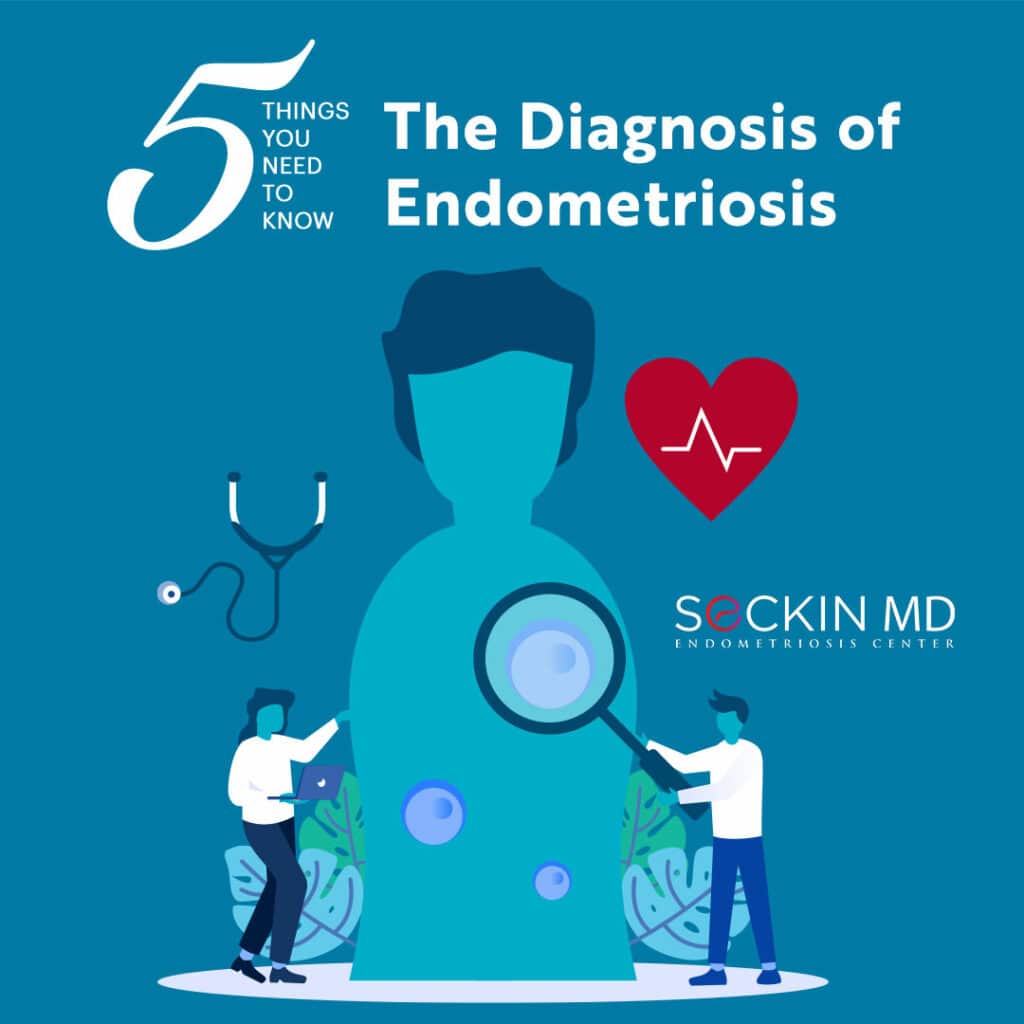5 Things You Need to Know About Endo Diagnosis

Despite its wide prevalence and advances in our understanding of endometriosis, the disease continues to be among the most difficult to diagnose. However, a confirmed diagnosis of endometriosis is essential for effective treatment. Here are 5 things you need to know about the diagnosis of endometriosis.
1. Many cases of endometriosis are still misdiagnosed
Endometriosis is a complex and multi-systemic disorder. Lesions do not just occur in the pelvic cavity or peritoneum. They can also spread to distant parts of the body– even as far as the thorax (chest cavity). Therefore, symptoms of endometriosis often overlap with those of other diseases, making diagnosis difficult.
Moreover, misconceptions about endometriosis are still widely prevalent in society. This means that it can still take up to 10 years after the onset of symptoms for some women to receive a confirmed diagnosis of endometriosis.
2. An experienced surgeon is a must
Endometriosis diagnosis not only requires a thorough understanding of the disease but also experience in recognizing its features. An experienced surgeon can reach a diagnosis, with a fair degree of accuracy, by studying the patient’s medical history and physically examining them.
The study of the patient’s medical history is important to understand the involvement of genetic and other factors that may lead to endometriosis. The consultation also helps in building long-term trust between the surgeon and the patient.
3. There are some imaging techniques that can help diagnose endometriosis
Imaging techniques such as magnetic resonance imaging (MRI) and ultrasound are fast gaining ground as viable non-invasive procedures for diagnosing endometriosis.
Transvaginal and transabdominal ultrasound can together help predict deep infiltrating endometriosis to a fair degree of certainty. This cannot be the definitive means for diagnosis, however.
Ultimately, laparoscopic deep excision surgery is the only definitive means for a confirmed diagnosis of endometriosis.
4. A definitive diagnosis is only possible by pathologically examining a lesion
There are new non-invasive diagnostic methods for endometriosis. However, a definite diagnosis is only possible with laparoscopic deep excision surgery and a histological examination of the lesion.
At Seckin Endometriosis Center, we use a patented Aqua Blue Contrast (ABC)TM technique that allows us to clearly differentiate endometriosis lesions from other tissues and mark them for excision. With this, surgeons are able to identify even lesions that are otherwise invisible due to reflections and obscuring from the operating light.
5. A word about the BCL-6 test
Researchers have recently identified the BCL-6 protein as a reliable marker of endometriosis. This is because BCL-6 is overexpressed during the secretory phase of the menstrual cycle as well as in the case of unexplained fertility. Laparoscopic surgery revealed that these women actually had endometriosis. The BCL-6 test may be a helpful adjunct prior to laparoscopy to diagnose endometriosis, however, this is yet to be adopted into the standard of care.
How long did it take you to get a proper diagnosis of endometriosis? Please share your experience with others by leaving a comment on our post on Facebook or Instagram if you wish.
Get a Second Opinion
Our endometriosis specialists are dedicated to providing patients with expert care. Whether you have been diagnosed or are looking to find a doctor, they are ready to help.Our office is located on 872 Fifth Avenue New York, NY 10065.
You may call us at (646) 960-3080 or have your case reviewed by clicking here.